The animal kingdom is full of fascinating creatures, each with their own unique way of navigating and experiencing the world. While many animals are recognized for their beautiful exteriors or impressive physical skills, some are known for their overpowering odors and potent stenches.
Odors are used by organisms in a variety of ways. They can be used as a defense mechanism to repel predators or as a way of attracting mates. Furthermore, some species use their sense of smell to track down prey or food sources.
Ultimately, many animals use smells to communicate with those around them and they are an essential part of an animal’s sensory experience that allows them to thrive in their surroundings.
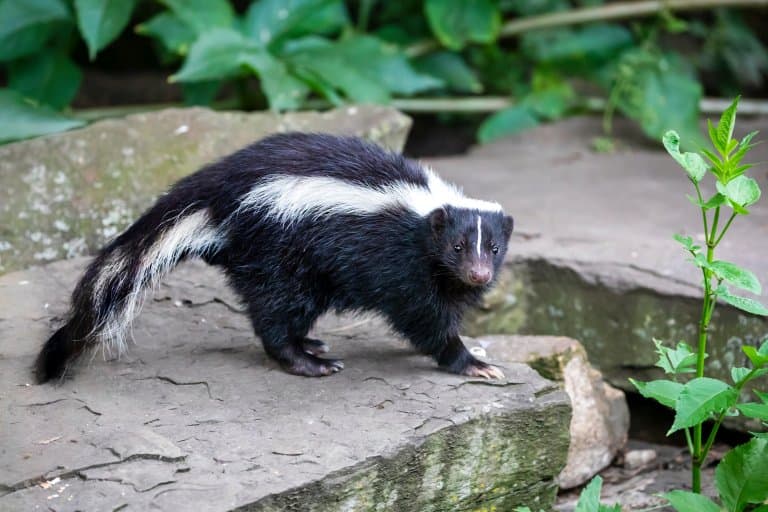
In the human world, smelling particularly pungent may not be considered a good thing. However, for other animals, possessing a strong fragrance might just be what gives you an edge over your competitors.
Odors can be used in marking territory, social bonding, and some animals even incorporate them into a part of their hygiene maintenance. Like many things in nature, animals have evolved and adapted ways to survive and cope with harsh ever-changing conditions. Producing powerful smells is one of these adaptations.
In this piece, we highlight ten of the smelliest animals that roam our planet.
10. Wolverine
Wolverines are renowned for their aggressive and formidable nature. They are also notorious for their offensive scent.
Scent glands found at the base of their tails produce a secretion that contains steroids and sulfur compounds. These secretions are utilized to mark territory boundaries and to interact with other wolverines.
The pungent smell means that they can also be referred to as the ‘skunk bear’ and ‘nasty cat’.

They are solitary animals, and their strong sense of smell allows them to flourish in their habitats. 1
9. Lesser Anteater
The southern tamandua, also known as the lesser anteater, inhabits Central and South America. It has long curved claws and a long snout perfect for sniffing out and eating ants and termites.
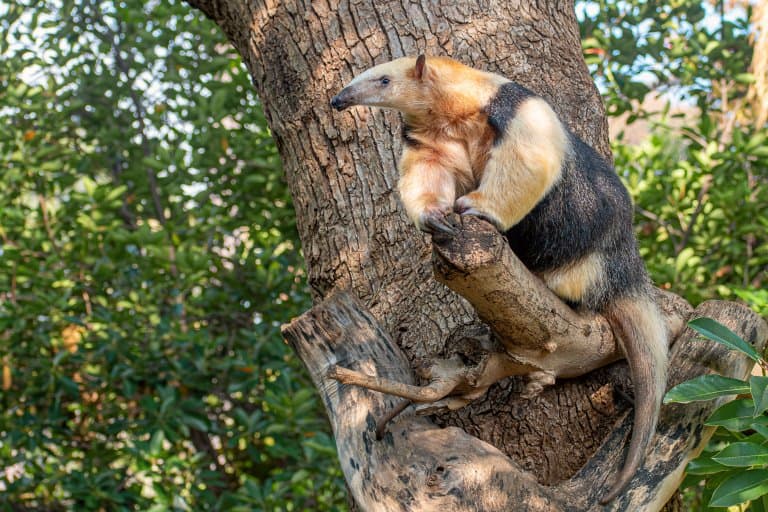
It has a prehensile tail that can be used for extra balance and to hold onto tree branches. To protect itself from the elements, it has thick wiry fur that is usually gray or brown.
Scent glands near its tail produce an emission that is musky and earthy. Its fragrant scent is believed to be due to the animal’s diet of insects. The emission is used to communicate with other anteaters. 2
8. Millipede
Millipedes are not actually insects. They are arthropods that are more closely related to lobsters, crayfish, and shrimp.

Celebrated for the number of legs they possess, millipedes are also capable of producing a vast range of different secretions, some of which can irritate the skin, harm the eyes, and, of course, leave a nauseating scent on predators.
Lizards, birds, and insects have all been found to prey on millepedes.
7. Hoatzin
It has been said that the hoatzin, also called the ‘stink bird’, smells like fresh cow manure.
It eats mostly leaves and is known to have a two-chamber digestive system similar to cows. Their meals ferment in their stomachs.
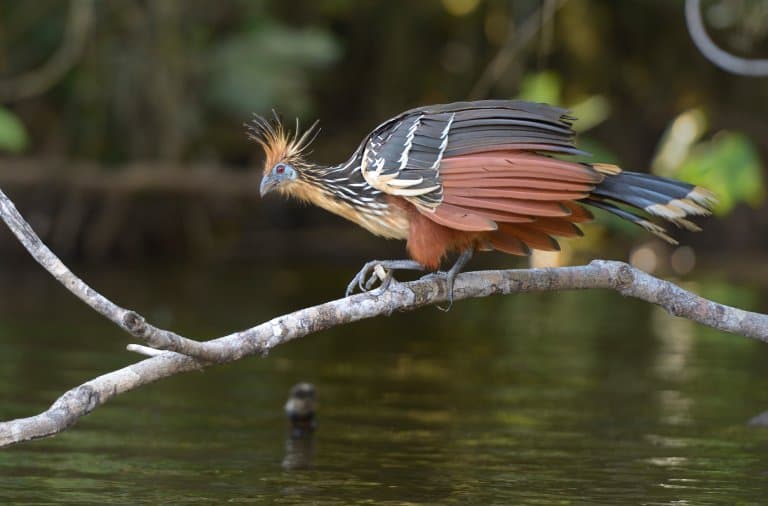
Native to South America, the hoatzin primarily resides in the Amazon Basin and the Orinoco Delta. It has a long tail and body that is marked by brown feathers and a blue face.
Its strong scent serves to deter predators as well as to attract mates. 3
6. Bombardier Beetle
The Bombardier beetle stores two chemicals in its body—hydroquinone and hydrogen peroxide. When the beetle feels they are in danger, it will release these two chemicals simultaneously. The mixture is exceptionally potent and can be fatal to other insects.
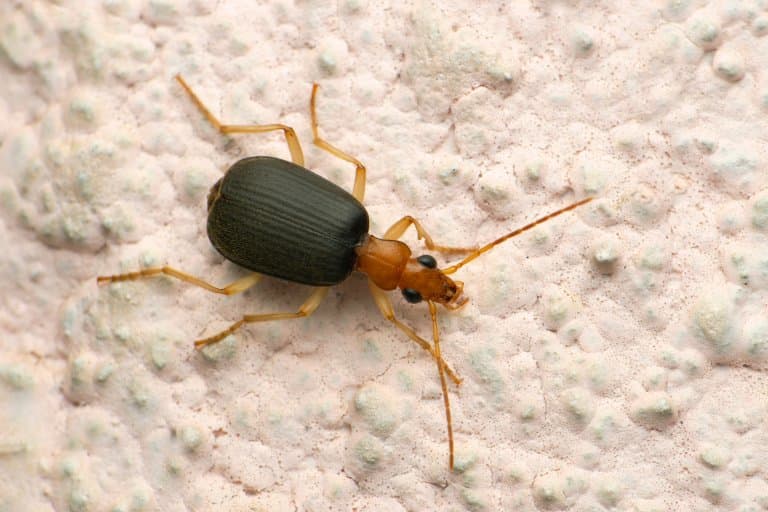
In addition to its powerful scent, the spray is extremely hot, reaching temperatures of up to 100 degrees. Predators of these beetles have frequently been found regurgitating their meals because of the searing concoction, and so, Bombardier beetles can survive even after being swallowed. 4
5. Musk Ox
Musk Ox are large shaggy mammals that live in arctic environments. Their urine is extremely musky and is produced by males to mark territory during mating season.
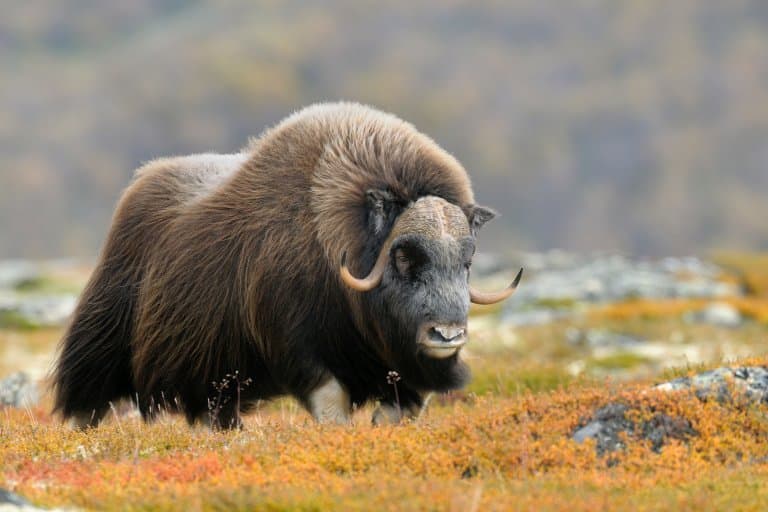
Their long fur protects them from harsh conditions, and they possess curved horns for self-defense. Both female and male oxen have horns, but those of males are longer and appear more curved.
Their rather unfortunate nickname is ‘ugly moose’.
4. Stink Bug
Named for their sharp odor, stink bugs are one of the most foul-smelling animals to have been discovered. They are also known for their sharp mouthparts that are used to suck the sap out of plants.

Their stinky secretions are produced by glands located on their thorax and researchers have described them as being skunk-like. 5
3. Tasmanian Devil
The Tasmanian devil can give off a very powerful odor when threatened. It has been described as having a musky, slightly sour, aroma.
Early European settlers actually thought it was their natural scent, after trapping them and smelling their stench. When in fact, a calm tasmanian devil isn’t smelly at all.

The Tasmanian devil has scent glands located around its anus and genital area that produce pungent secretions. These emissions are also believed to be a form of communication between Tasmanian devils during mating season, helping males locate nearby females.
Interestingly, the Tasmanian devil is the world’s largest carnivorous marsupial, and they have extremely muscular jaws. Pound for pound, they have one of the most powerful bites of any land mammal.
2. Striped Polecat
The striped polecat is also called the zorilla, African polecat, or striped weasel. Similar to the skunk, it produces a strong odor from anal glands. If it enters the eyes of a predator, the noxious spray can cause temporary blindness and irritation.
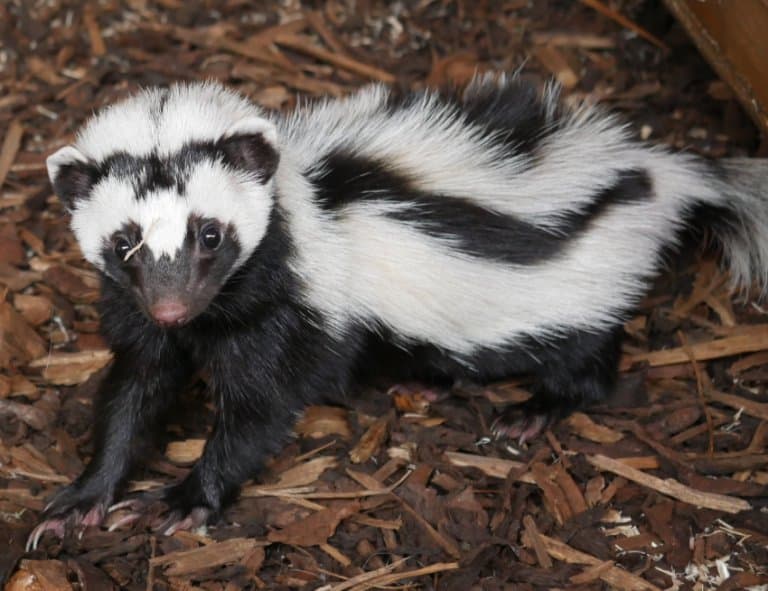
The striped polecat is a predator itself as a skilled hunter of small rodents, insects, and other small animals.
In some parts of the world, it is kept as a pet (after having its scent glands surgically removed). 6
1. Skunk
Recognized by its black and white pattern, the skunk is famous for its scent glands that release a foul odor when threatened. They are not particularly quick animals, and so, rely on this defense mechanism to deter predators.

The odor is released in the form of a pungent liquid spray that contains sulfuric molecules and acetates. It can cause temporary blindness and even difficulty breathing in humans.
Amazingly, skunks can eject their spray up to three meters away and the aroma can be sensed up to a mile away by some. They have to use this tactic strategically though, as each skunk only contains about five to eight sprays at a time. 7
Final Thoughts
Smell is a crucial sense for many animals, including humans. From finding food to marking territory, attracting mates, and warding off dangers, many species rely on their scents to survive.
Odors can be detected from long distances away, and so can serve as an effective mode of communication between animals. Many use them to help them recognize individuals of the same species as well as distinguish themselves from others.
In conclusion, odors play an important role in the daily lives of many of the smelliest animals on the planet and they are employed in a remarkable number of different ways.
Fact Sources & References
- Riley Woodford (2022), “Wolverines: Behind the Myth“, Alaska Fish & Wildlife News.
- “Southern Tamandua“, Smithsonian’s National Zoo and Conservation Biology Institute.
- Liz Langley (2013), “5 Animals With Stinky Defenses“, National Geographic.
- Ted C. MacRae (2009), “Tyrant ground beetles“, Beetles In The Bush.
- Tammana Begum (2021), “Brown marmorated stink bugs arrive in the UK and pose threat to crops“, Natural History Museum.
- Richard Weigl, “Zorilla“, EOL, 2005.
- Alina Bradford (2016), “Facts About Skunks“, Live Science.
